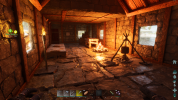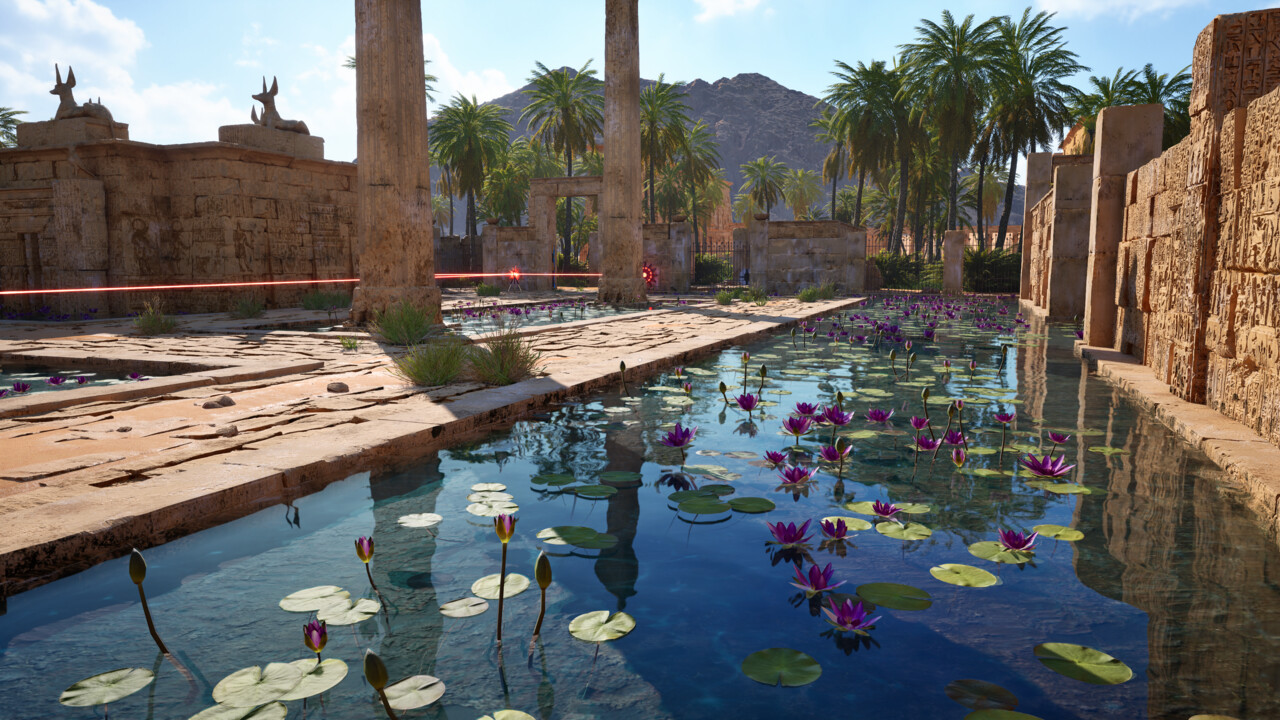For a more stable image pop-ups must also disappear too but they are also been visable with Nanite and Mesh Shader.
There's not really a significant amount of pop-in to my eyes; the main thing is some of the small mesh scatter like pebbles which indeed would be nice if they faded to texture better, but for the most part the image is very stable all the way up to the sky and back.
Sure ARK has more polygons per object but that difference has less of an impact on the overall impression than grounded and artifact free lighting.
Indeed the places where the geometry makes a big difference is *in* the lighting. In many cases the thing that makes real geometry look different from normal maps or POM or similar is not just motion parallax but the fine detail lighting and shadowing it creates. This is one of the main reasons it was important to have something like VSMs alongside Nanite; without high detail shadows, the high detail geometry is not nearly as obvious. I think shots like this - which again is just some of the most basic assets in the game - show it off well. And this is effectively for user generated content in an open world with fully dynamic lighting/time of day, not some professional tweaked shot/scene.

You may have to play it to get the proper experience. My wife - who is pretty far from a graphic nerd - comments on it quite a bit and it's something I almost never hear her comment on in other games. I'd encourage you guys to check it out if you have a high end GPU; it really does look quite nice in motion. I'm curious to see how much of that they will be able to maintain on the consoles.
That said no shade against Horizon Forbidden West - also a fantastic looking game and certainly more polished.
After watching the Alan Wake 2 videos even multiple users in this forum said that the environment and graphics looked undetailed even though it's one of the games or THE game with the highest level of geometry per object.
Indeed it's definitely not the raw polygon count that matters, but the perception of detail where we expect it to be. Alan Wake 2 has some really nicely detailed objects and not much pop-in from what I've seen of it so far, but it's admittedly a bit uneven in the visual impact. Some of the foliage is nice, but it's light on the ground clutter/scatter so you still see textured terrain polygons. The rocks are smooth, but seem to lack high frequency detail. The town environment is probably the nicest of what I've seen so far, but it's also fairly small. I'm still early on but I'd say the interiors are excellent, while the exterior stuff is more average.
Therefore extremly high polycounts doesn't make that much of a difference for most scenarios after all whereas in Cyberpunk 2077 the pathtracing is rightly praised even by the masses.
I think the situation wasn't actually that much different to be honest. Again anecdotal but even my technically inclined friends - and myself to some extent - wouldn't necessarily say the difference between pathtracing and the regular RT path in cyberpunk is that massive in most cases. I respect the technology, but I think it says a lot that the tech they had before pathtracing actually still holds up quite well and obviously still has advantages in performance and ghosting. And I do think that like with AW2 it took DF and other places finding and showing off the places where things look exceptional for people to start noticing more broadly.
What's more important for overall impression to me is whether you can continue to display a lot of detail for distant objects.
Good continuous LOD and getting rid of pop-in is definitely near the top of my list too. That along with adding significantly more clutter to scenes is what we really need from the geometric side. On the lighting side we're moving in the right direction, but it'll really pay off once we get it interacting with higher detail geometry too.
I'll repeat my perhaps obvious take that both are important and the relative importance of each depends a lot on the specific game.



